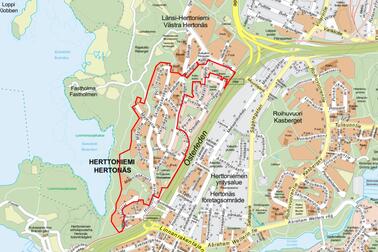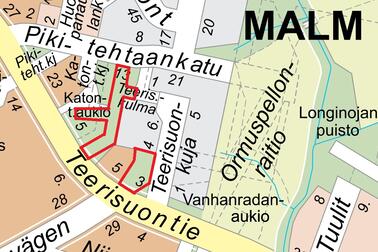
According to the proposal, future local detailed plans will completely remove the obligation to build parking spaces for new residential buildings in the southernmost parts of Helsinki: Pasila and the area south of Hakamäentie. In this area, developers of residential buildings will be able to decide the number of parking spaces to be built entirely based on demand, on market terms, going forwards. This change is related to the preparation of the parking regulations included in local detailed plans.
Elsewhere in Helsinki, the City will continue to include a minimum parking requirement in its local detailed plans, but the number of parking spaces required will be clearly lower than the previous requirement. In these areas as well, developers will determine how many parking spaces they will build on plots. In places other than the southernmost parts of Helsinki, the requirement for blocks of flats going forwards is that at least one parking space must be built per every 220–280 square metres of floor area to be built, depending on the area. Slightly fewer parking spaces could be built for local business and service centres. These types of local centres exist in Helsinki districts such as Kannelmäki, Malmi, Itäkeskus and Herttoniemi.
The new parking regulations only apply to new buildings, meaning that changes will take place slowly. The new regulations have no impact on existing buildings. In situations where an existing building is extended or a new building is added to a built plot, constructing parking spaces for the new floor area will not be required going forwards. The City of Helsinki expects that this may have a significant impact on the promotion of urban infill.
Currently, the local detailed plans drawn up in Helsinki require at least one parking space to be built per 100–150 square metres of floor area for new blocks of flats, depending on the area. Due to this obligation, developers sometimes build parking spaces at a loss. The new calculation guideline is based on the City not requiring developers to implement more parking spaces than is necessary to satisfy demand. Developers know best how many parking spaces should be implemented and at what price they can be sold or leased in order to successfully sell or lease the flats built.
The change will increase Helsinki’s profit from land leasing and profitability
The change is expected to increase the rental income of the City of Helsinki for plots in the long term. The value of the plots increases when the number of parking spaces they are required to include does not exceed demand at market price. As a result, building projects become more attractive to and profitable for developers. The change also supports the City of Helsinki’s carbon neutrality goal because it is expected to reduce emissions from construction and increase the use of sustainable modes of transport.
The reason why the proposal to remove the obligation is targeted at Pasila and the area south of Hakamäentie is that studies show that the people living in this area primarily travel on foot and by public transport. Residents travelling by car may also use the private parking facilities located in the area as well as street-side parking, which is permitted with a resident parking permit in a part of the area. Plot-specific parking will also continue to be implemented in housing projects despite it not being required.
This proposed change is one of the measures included in the Helsinki Parking Policy, which the City Board approved in 2022. In addition to traffic goals, the Parking Policy also promotes the realisation of the City’s economic development, climate and housing policy goals. Its purpose is to increase the flexibility of parking solutions and meet future mobility needs. Other measures include things such as changing parking spaces located along streets and in public areas to be subject to a time restriction or fee in the long term. The aim of this is to ensure efficient use of street-side parking spaces and their sufficient availability for people who are running errands and visiting. Separate plans and decisions will be made regarding these changes.


